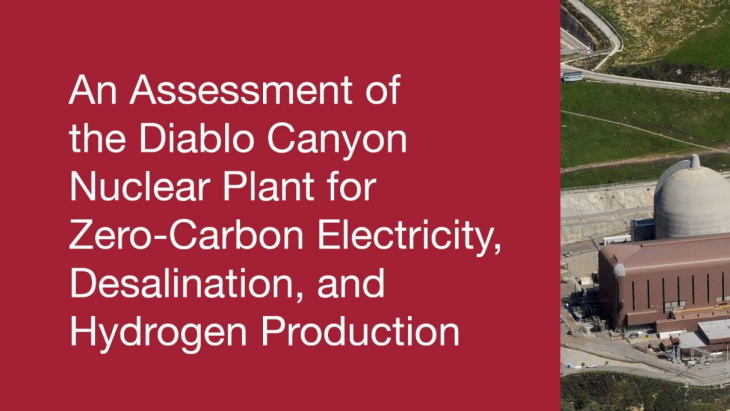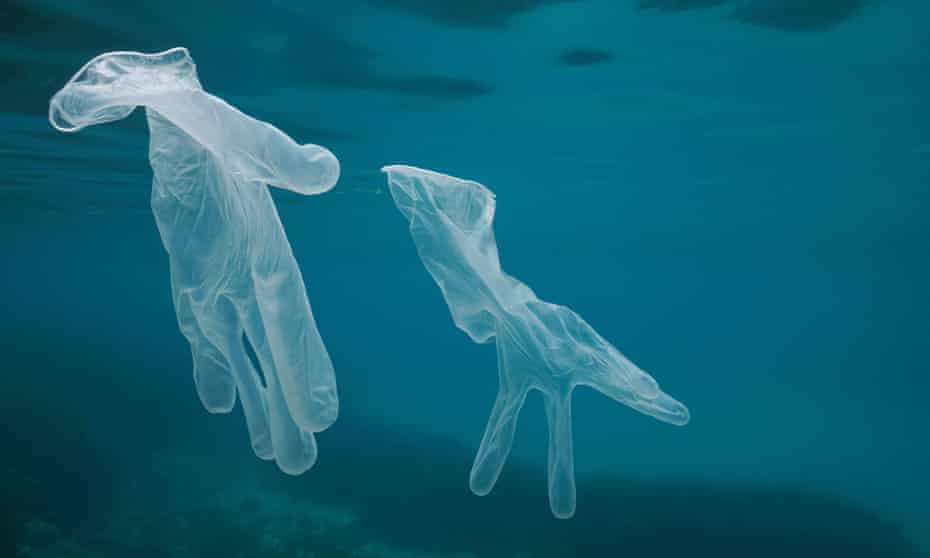The United States, Russia, and France now describe the once-neglected technology as a key part of their decarbonization plans.
By Robinson Meyer
THE ATLANTIC

This is an excerpt from The Atlantic’s climate newsletter, The Weekly Planet.
For years, the nuclear-power industry has had a complaint: Why does nobody love us?
Nuclear has been, after all, the Atlas of carbon-free energy production, keeping the world hefted on its shoulders, year after year, with thousands of megawatt-hours of electricity that required burning no fossil fuels. Even today, nuclear plants generate more zero-carbon power worldwide than wind and solar do combined.
And yet it has been (as the complaint goes) ignored, hated, marginalized. Traditional environmentalists have trashed it, opposing new construction and warning of catastrophic accidents. As recently as 2017, the Sierra Club’s Nuclear Free campaign warned that nuclear energy had a “big carbon footprint” because fossil fuels are used to mine uranium for fuel rods—even though the same criticism could be made of the fuels used to mine lithium, silicon, and other minerals in renewables. This gaslighting aggravated nuclear advocates and turned them into the professional contrarians of the energy world. Nuclear could save the world, they muttered, if anyone would give us the chance.
How did they escape their funk? As with so many other problems in life, the answer is that they just had to keep doing the work, and wait.
Over the past few months, nuclear has become an unmistakable part of the world’s decarbonization strategy as formulated by both the right and the left. Nuclear is a part of the decarbonization plans released by the United States, the United Kingdom, and China, and it seems likely to play an even bigger role in poorer countries that want to maintain heavy industry. A number of bets placed during the past decade are coming to fruition. Nuclear is enjoying—well, not love, perhaps, and not even adoration, but at least a grudging affection.
“It’s being treated on more and more of an equal footing, I think it’s fair to say,” Jackie Toth, the senior advocacy director at the Good Energy Collective, a progressive pro-nuclear organization, told me. “Is it a revival or make-or-break moment? It’s a bit of both.”
Nuclear’s new glow can be seen at the Conference of the Parties, the ongoing United Nations climate conference in Glasgow, Scotland. Its presence alone is noteworthy: “At COP25, I was warned not to even attend,” Rafael Mariano Grossi, the International Atomic Energy Agency’s director-general, told Bloomberg. This year, representatives from the United States, Russia, and Brazil all described nuclear energy as a major part of their decarbonization strategy at the event.
Indeed, the Biden administration has turned America’s cohort of “advanced nuclear” start-ups and their smaller and (hopefully) safer reactors into a facet of its climate diplomacy. At COP last week, the United States and Romania announced a partnership that will see the American start-up NuScale, which makes modular reactors that can be produced in a factory, install five of them into retired coal plants in Romania and help the country, where roughly one-seventh of electricity comes from coal, phase out its coal plants by 2032. The reactors will eliminate 45 million tons of carbon dioxide a year, according to Third Way, a centrist U.S. advocacy group that praised the deal.
“We are very bullish on these advanced nuclear reactors,” Jennifer Granholm, the U.S. secretary of energy, told Yahoo News. “We have, in fact, invested a lot of money in the research and development of those.”
Over the past few years, the climate movement, too, has warmed to nuclear power. In 2018, the Union of Concerned Scientists, which was originally founded as a nuclear-safety watchdog (the eponymous concerned scientists were nuclear scientists!), reported that more than a third of the U.S. nuclear fleet was slated to close early. If closed, those plants would likely be replaced with coal and natural gas, the scientists warned.
American politicians of both parties are now sufficiently open to nuclear that they have begun to support it with huge infusions of cash. The Trump administration’s Department of Energy was so excited about advanced nuclear that it made a fake dating app to promote it. (“So … it’s been a while since nuclear has put itself out there,” its announcement post began.) The bipartisan infrastructure bill that the House of Representatives passed last week boasts more than $8.47 billion for existing nuclear plants (including a new subsidy to help keep them alive into the mid-2020s) and advanced-nuclear demonstration projects. Joe Biden’s signature spending package, the Build Back Better Act, contains a separate new production tax credit for nuclear plants.
This isn’t happening only in the United States. China is planning 150 new reactors in the next 15 years. French President Emmanuel Macron announced today that France will “relaunch the construction of nuclear reactors” for the first time in decades. As Bloomberg News reports, that’s more reactors than the entire world has built since 1986. And the European “green taxonomy,” a lengthy regulation that specifies what forms of energy investment qualify as “green” according to the European Union, is expected to list nuclear as climate-friendly.
At the same time, some of those American nuclear-energy start-ups are beginning the slow work of going to market. Two companies, TerraPower and X-energy, have submitted plans to the U.S. Nuclear Regulatory Commission. TerraPower, a Washington State–based company founded and chaired by Bill Gates, uses uranium fuel encased in molten salt-based coolant; X-energy, in Maryland, uses billiard-ball-size graphite spheres called “pebbles” in its reactor design.
If you’re like me, you’ve been hearing about advanced reactors for years without a clear sense of what they mean or when they’ll be ready. They seem to occupy a weird intermediate zone where no one has ever built an advanced reactor, but also the technology is already under regulatory review. The first demonstration projects won’t get up and running for another few years. So it might seem unwise to depend on them to fix the American electricity mix in, say, 2035, when Biden hopes the power grid will be carbon-free.
But the delay in nuclear technology is unusually front-loaded on the timeline between concept and commercialization. Normally, we hear about a scientific breakthrough or new technology, then wait years (or decades) for it to make its way to market. Engineers learn how the technology works partially by building it, testing it out, and then adapting it to a mass-production environment.
But because of the risk of nuclear accidents, nuclear technology receives regulatory approval before it is even built. A new reactor design is inspected and vetted by the Nuclear Regulatory Commission. An approved advanced-nuclear reactor could go from blueprint to build-out very quickly: In the span of a few years, TerraPower or X-energy could receive regulatory approval for its design, build a demonstration unit, and then—assuming it works—fill out its order book.
Of course, there’s one thing that could put nuclear back on the defensive: a major accident. Disasters at Three Mile Island, Chernobyl, and Fukushima dissuaded governments, utilities, and investors from embracing the technology. After Fukushima, Japan shut down its fleet of 50 nuclear reactors, a phaseout that it has only recently begun to reverse, and Germany adopted plans to retire zero-carbon nuclear plants years before it shuts down coal plants.
All of this now has to happen on relatively short timelines. “The big action on climate change and for utility order books needs to happen before 2030,” Toth, of the Good Energy Collective, said. Utilities, in particular, have to decide soon what they will build to fulfill net-zero promises. “That means the first advanced-nuclear deployments in the U.S. have to go extremely well for customers to want to buy them over natural gas.”
Nuclear is losing its stigma, in other words. It’s been invited to the cool kids’ table. The reindeer games are over. Now it has to deliver.
Robinson Meyer is a staff writer at The Atlantic. He is the author of the newsletter The Weekly Planet, and a co-founder of the COVID Tracking Project at The Atlantic.









